Picture yourself walking along a darkened beach when suddenly the waves begin to glow with an ethereal blue light. Each footstep in the wet sand creates tiny sparkles, and the crashing surf transforms into liquid lightning. This magical spectacle isn’t science fiction, it’s one of nature’s most captivating phenomena happening right along American coastlines.
You might think this glowing water is some sort of chemical reaction or pollution, but the truth is far more fascinating. These luminescent displays are created by microscopic organisms that have been lighting up our oceans for millions of years. From California’s iconic shores to unexpected Atlantic coast locations, these tiny creatures put on shows that rival the most elaborate fireworks displays.
The Microscopic Stars Behind the Show
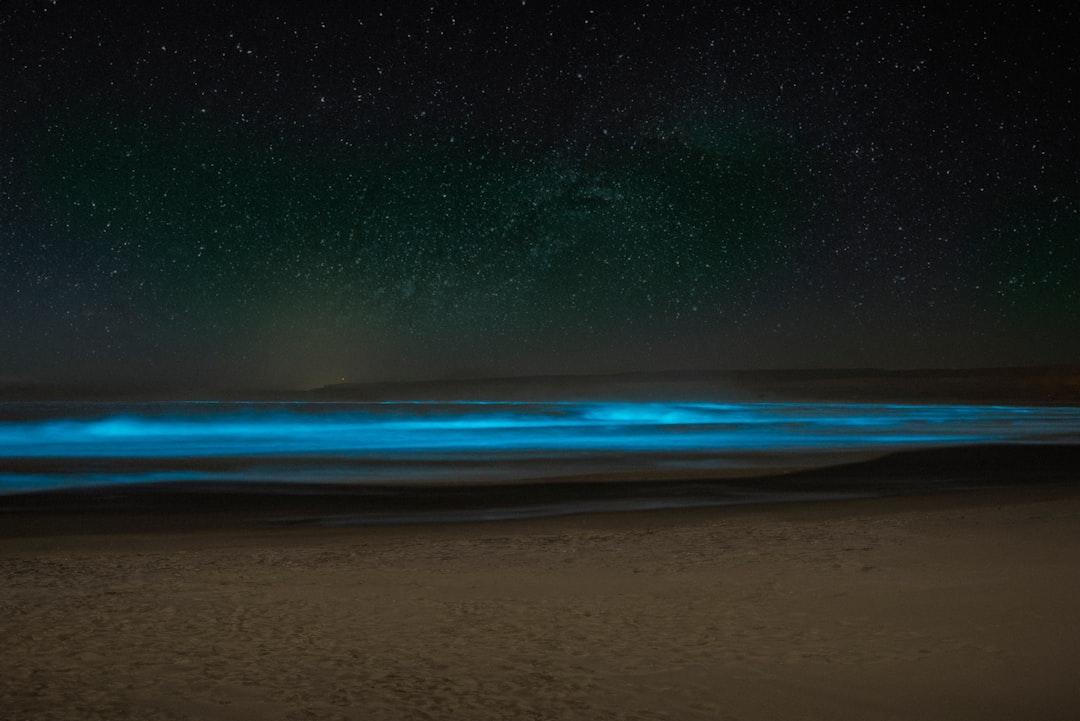
The glow is emitted by tiny organisms called bioluminescent algae that live in the water, specifically bioluminescent algae that are found in oceans worldwide. Dinoflagellates are single-celled phytoplankton that are usually invisible to the naked eye, but when they are present in high numbers, they can turn the water a hazy green or even orange, depending on the pigments present in cells of that species. Think of them as nature’s microscopic disco balls, each one capable of producing its own light show.
These organisms are like plants in that they photosynthesize, but unlike most plants they move around extensively and can swim, leading researchers to refer to them as the Michael Phelps of the plankton world. Their strong swimming abilities are the reason they are able to take over the coastal ecosystem, turning the water red during the day, hence the term red tide, and making it glow at night.
The Chemistry of Light Creation
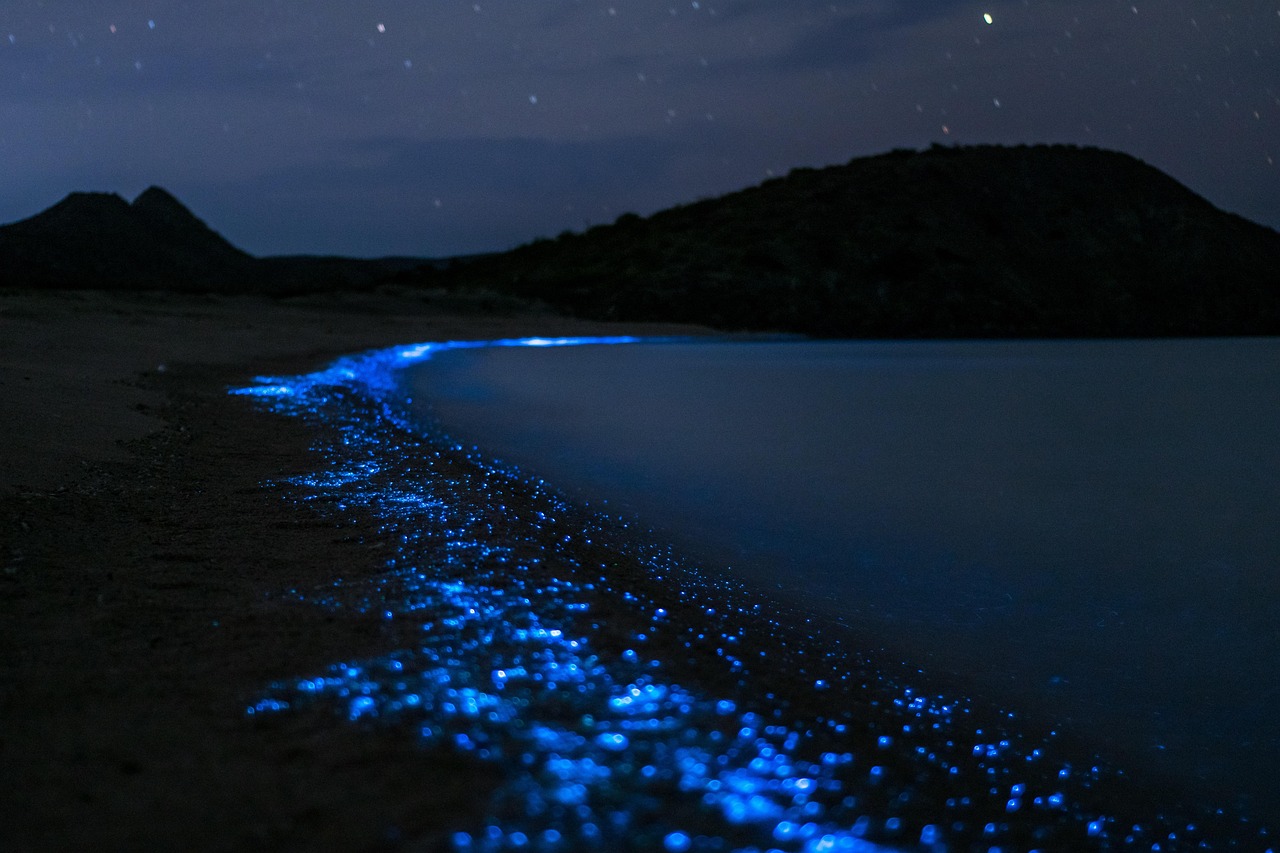
The magic happens thanks to a light-emitting molecule in their cells called luciferin, combined with an enzyme called luciferase, which creates the chemical reaction between luciferin and oxygen, making these organisms glow. This reaction is called oxidation, and once luciferin binds to oxygen, it produces oxyluciferin and emits energy in the form of light.
It is known as a “cold light” because it appears bluish and generates little heat. The color and intensity of the light vary depending on how the luciferin molecules are arranged in an organism and depending on the type of luciferase enzyme. Marine organisms like the dinoflagellates found around the shores of the San Francisco Bay emit blue light.
Nature’s Defense Mechanism at Work
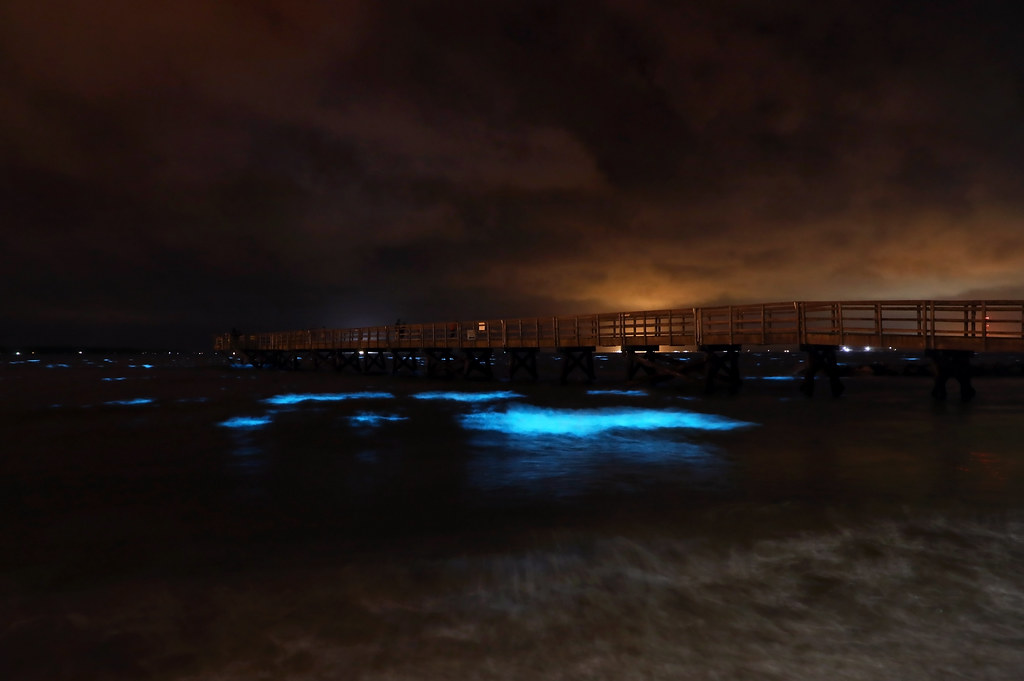
These organisms don’t show off their glowing powers during the day, but when nighttime rolls around and they get physically disturbed like from a breaking wave, a boat, a dolphin or a surfer, they unleash their glow, with each individual cell’s flash of light creating quite bright glowing when there’s a lot of them in the water. The primary reason is thought to be defense, as the sudden flash of light can startle predators, giving the plankton a chance to escape, and can also attract larger predators to the area, which may prey on the smaller predators that are trying to eat the plankton.
This defensive strategy is incredibly sophisticated for such tiny organisms. This is sometimes referred to as the burglar alarm effect. Dinoflagellates use bioluminescence as a form of predator avoidance, meaning that when a small fish tries to eat the algae, the algae produce this beautiful blue light that attracts bigger predators, which instead eat the small fish.
Perfect Storm Conditions for Glowing Waters
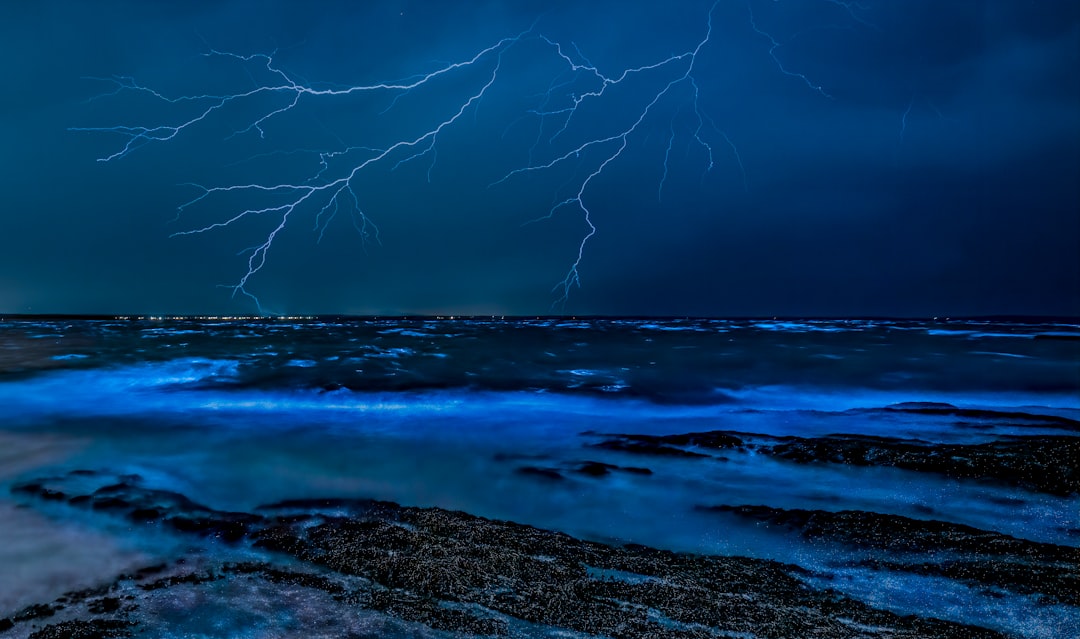
A rainy or windy day followed by a calm day can kick off the sequence of events leading to a bloom, as rainy days bring nutrients like phosphate and nitrate found in fertilizers used on land into the watershed and eventually into the sea, while wind causes the mixing of deeper water, which has more nutrients, up to the surface. During this time of year off certain coasts, the temperature of the water is just right for the organism to grow in numbers, as phytoplankton will bloom or rapidly increase in cell concentration when temperature, light and nutrient concentrations are sufficient for rapid cell growth.
This year, warming ocean temperatures and nutrient-rich runoff from agriculture are fueling conditions that may make these blooms stronger and more frequent. Calm waters in a bay where the area is more enclosed and unaffected by the wind, could be a great spot to look for them after a windy or rainy day.
California’s Glowing Coastline Phenomenon
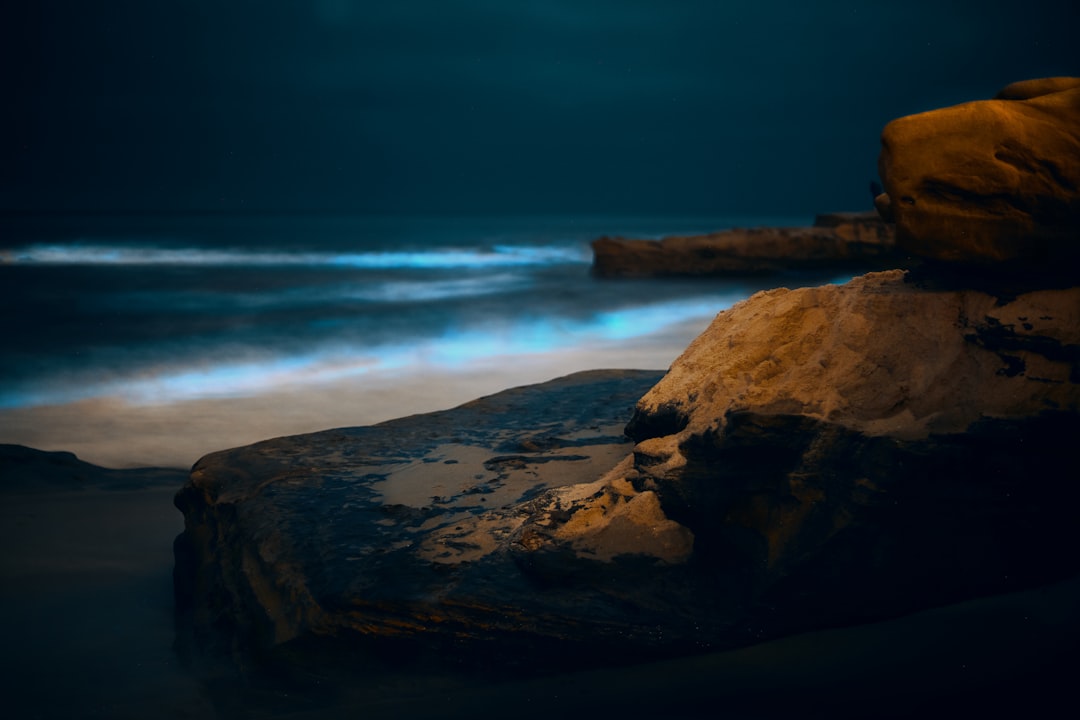
While bioluminescence has been occurring periodically in San Diego and other parts of Southern California, it is quite rare near the shoreline, with the most common places being San Diego, specifically at Mission Beach, La Jolla Shores, and Blacks Beach. According to local photographers who document these sightings, bioluminescence was recently visible from the sand and has been witnessed at several beaches, including Torrey Pines State Beach, North Ponto Beach and Carlsbad State Beach.
This spectacle typically occurs in the spring or fall months and can rarely take place during winter, as observed this year in San Diego during the middle of February and in Long Beach at the end of December of last year. Bigger waves mean brighter bioluminescence since the algae are more agitated.
Beyond California: East Coast Surprises
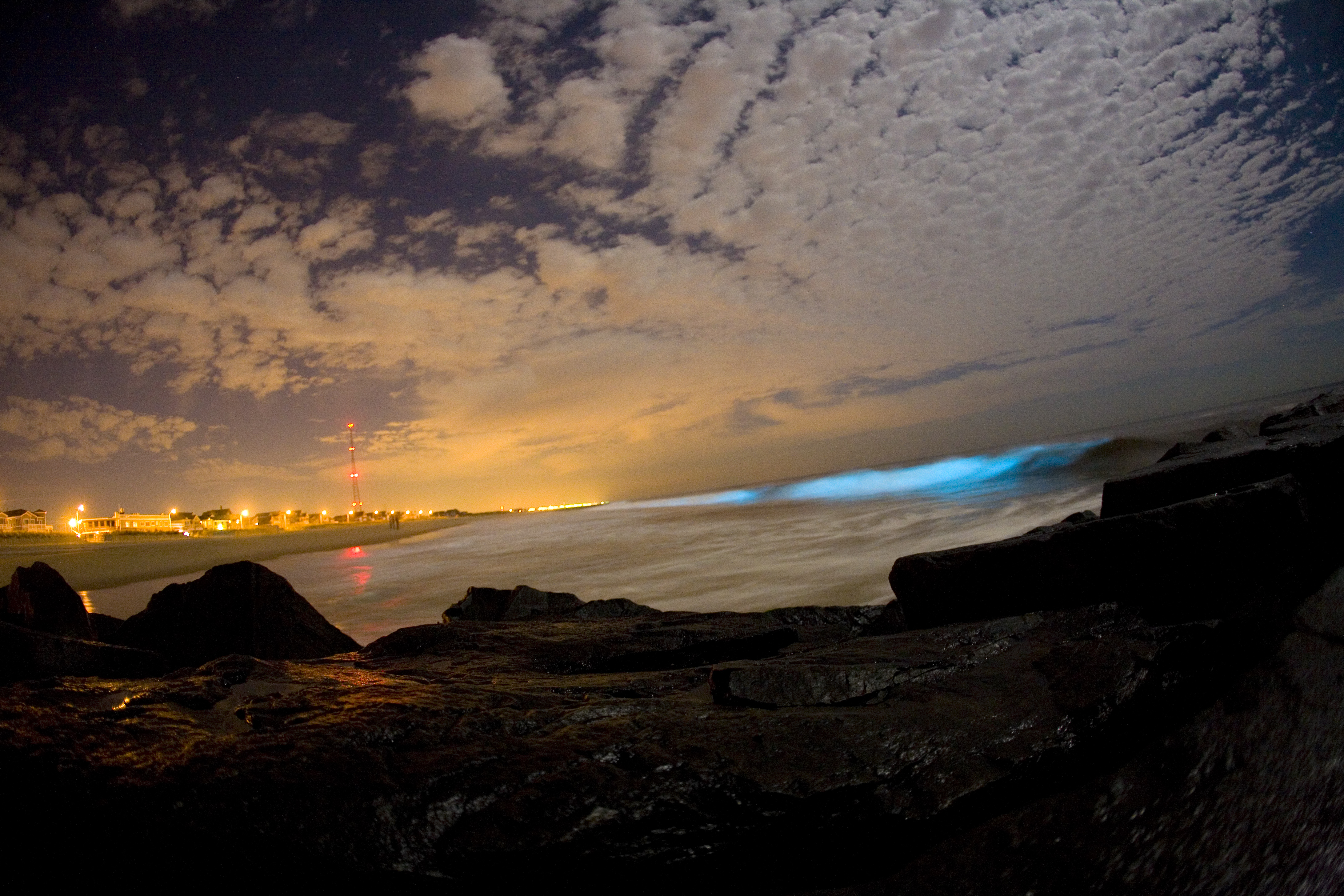
Manasquan Beach, New Jersey experiences waves that glow due to an abundance of bioluminescent organisms during certain times of the year. From June through the summer, coastal waters in the U.S., Central America, Puerto Rico, and parts of Asia will shimmer with the otherworldly glow of bioluminescent plankton caused by microscopic organisms known as dinoflagellates.
The phenomenon is typically caused by various bioluminescent phytoplankton species, aptly nicknamed “sea sparkle,” which typically blooms in certain regions yearly. Summer months and warmer water temperatures often bring higher concentrations of bioluminescent organisms, making the glow brighter and more vibrant.
Safety Concerns with Glowing Waters
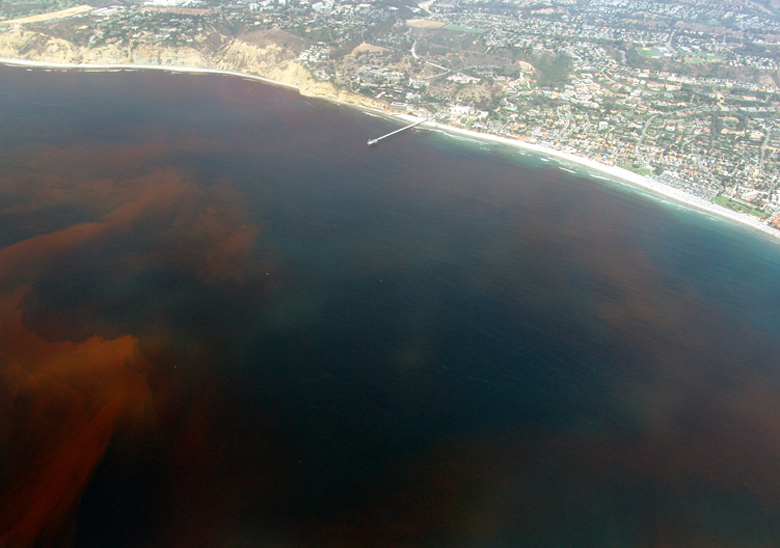
In some areas such as the Mediterranean, certain dinoflagellate species produce neurotoxins, but local populations may not produce these toxins, though some people are sensitive to inhaling air associated with the red tide, and it is personal choice whether to go in the water, but there is no public health warning associated with typical red tides. For most people, it is safe to swim in the red tides, but this can cause skin irritation and burning eyes, and you should not swim among dead fish because they can be associated with harmful bacteria.
Scientists say these tiny creatures can emit toxins that might irritate those with underlying breathing problems like asthma or other chronic respiratory issues, and these people should avoid red tides, as symptoms from breathing red tide toxins can include coughing, sneezing, and teary eyes. While bioluminescence itself is generally safe to view from a distance, direct contact with red tide waters requires caution, as even if the glowing species is not toxic, a red tide can contain other harmful algae or bacteria.
Timing Your Magical Encounter

Bioluminescence can’t be seen in daylight, and if you’re trying to spot it with your naked eye, it can be faint, especially if there are lights around, but on a dark beach on a moonless night, you can see dinoflagellate bioluminescence in waves that break on the shore. Generally speaking, the summer months are the best time of the year to find and watch this glowing phenomenon, when glowing plankton is most often found in many places, and most places that often see this chemical reaction concur that it happens in the middle to the late summer for the majority of the time.
You may also see bioluminescence around new moons as there is little to no moonlight that could make it harder to see the glowing organisms. The best time to view the bioluminescent bloom is after the sun has completely set, and viewing during a new moon and in an area with little light pollution will help with visibility.
Climate Change and Future Displays
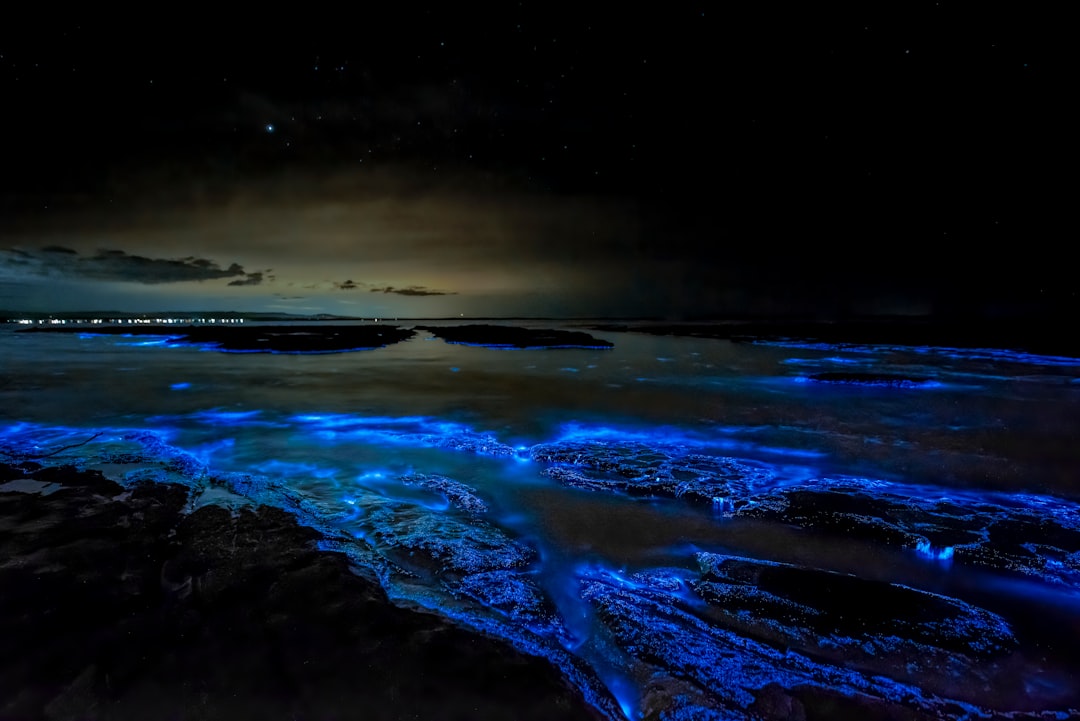
Researchers have found that global warming may be fueling the rapid growth and increase of bioluminescent marine plankton that is incredibly harmful to the fish in its environment, largely because these microscopic organisms such as plankton often bloom in areas where there are low levels of oxygen and higher levels of nitrogen and phosphorus, and whilst this causes plankton to bloom, it is typically bad news for marine life and the food chain.
Scientists noted a significant increase in gelatinous plankton biomass in the Bering Sea, mostly from scyphozoan and hydrozoan jellyfish, that was attributed to warming waters, as gelatinous plankton are very tolerant to a wide range of nutrient levels and environmental parameters, and thus can bloom rapidly and cause community changes in surface waters in virtually all of the Earth’s oceans. Globally, red tide events are increasing in frequency, and locally, there may be more frequent events since the 1960s.
These bioluminescent waves represent one of Earth’s most spectacular natural phenomena, where microscopic organisms create displays that rival any human-made light show. The next time you find yourself near a darkened coastline, remember that beneath those glowing waves lies a complex ecosystem of tiny performers, each one contributing to nature’s most mesmerizing theater. Whether you witness this magical display along California’s shores or discover it unexpectedly on an East Coast beach, you’re seeing a defense mechanism that has been perfecting itself for millions of years, turning our oceans into liquid starlight.




